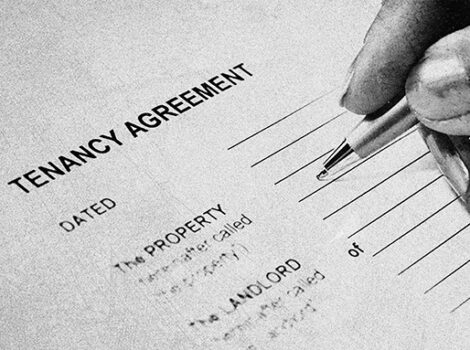
Official figures show that Botswana workers earn on average a net monthly salary of P6,620 ($578) after tax, against a world average of P16,885. The average monthly earning translates to one-third of the country’s cost of living. A summary of the cost of living estimates shows that a family of four in Botswana lives on P33,902 (just under $3,000) per month while a single person family is estimated to survive on P17,787 (just over $1,500) per month, almost three times more than the average net monthly salary of P6,620.
With a Gross Domestic Product (GDP) of US$15,530 billion and a GDP per capita of $7,653 the Botswana economy is relatively strong by international standards. The high cost of living versus the rate of earning, therefore, remains a mystery. The low monthly average income, which falls way below the estimated monthly cost of living makes no sense. According to Mercer, a global consulting leader in advancing health, wealth and careers and a wholly-owned subsidiary of Marsh & McLennan Companies, a New York Stock Exchange-listed company found that several factors including currency fluctuations, the cost of inflation for goods and services, and volatility in accommodation prices, contribute to the overall cost of expatriate packages for employees on international assignments.
In 2018, the Mercer Cost of Living Index placed Botswana at 189 out 209 countries, and as a whole, Botswana ranked on the lower end of the most expensive places to live in the world. In Botswana, the standard of living between the rich and poor is visibly different. Botswana has a poverty rate of 19%, with the majority of poor areas located in more rural areas.
Also, at 17.8%, the unemployment rate is just too high. As a consequence, the World Bank reports that Botswana’s income inequality is one of the highest in the world, precisely among the top six.
What is the cost of living, and how is it measured? Why does it matter, and should it be the subject of high consideration for public and social policy? Expatistan, a cost of living calculator that compares the cost of living between cities around the world describes the cost of living as “the amount of money needed to cover basic expenses such as housing, food, taxes, and healthcare in a certain place and period. The cost of living is often used to compare how expensive it is to live in one city versus another. The cost of living is tied to wages. If expenses are higher in a city such as New York, for example, salary levels must be higher so that people can afford to live in that city”.
Investopedia states that the cost of living index is a theoretical price index that measures the relative cost of living over time or regions. It is an index that measures differences in the prices of goods and services and allows for substitutions with other items as prices vary.
The cost of living score is calculated based on the cost of food, transportation, health services, rent, utilities, taxes and miscellaneous expenses. Available literature shows that the Consumer Price Index (CPI) is the most widely used measure of the level of prices. It is constructed by collecting the prices of thousands of goods and services. It is known that the Gross Domestic Product (GDP) expresses the quality of diverse goods and services into a single number which is used as a common measure of society’s output.
Similarly, the CPI expresses the prices of numerous goods and services into a single index for measuring the general price level. The CPI is a weighted average of all prices. It is the basket of goods and services relative to the price of the same basket in some base year. Another price index is the Producer Price Index (PPI). It measures the prices of a typical basket of goods bought by firms or producing units. Since the output of one industry is used as an input in a number of other industries, the PPI is also significant. PPI differs from CPI in its coverage, which includes raw materials and semi-finished goods. It also differs from CPI because it is designed to measure prices at an early stage of the distribution system.
According to WorldData.info, the economic importance of African countries is rather low compared to other continents. The average income in the least industrialised continent is almost consistently at the lowest end of the scale when compared to the rest of the world. However, it is important to bear in mind that in this case, an enormous proportion of the population is considered to be self-sufficient. This means that in the many agricultural regions, the inhabitants are self-sufficient and therefore do not need any money that could be collected with the financial-based measurement methods of the industrial nations.
It is assumed that 30% of the people in Sub-Saharan Africa feed themselves completely and that a further 50% will cover at least large parts of their own needs through agriculture, livestock breeding and other ways that cannot be measured in monetary terms. This means that the countries’ tax revenues and the resulting possibilities for financing infrastructure, education and health care are correspondingly low.
WorldData.info also states that the African standard of living is considerably below average. Life expectancy is well below 60 years and large sections of the population have neither adequate sanitation nor medical care. Even the water supply is inadequate in many populated areas.
However, the picture has been changing for about two to three decades. Most of the world’s fastest-growing economies are in Africa. This is also due to changes in the political direction, which increasingly have democratic structures and thus improve economic and personnel development. Long-standing civil wars have ended and the infrastructure can be expanded by advancing industrialisation. Due to the large desert and rain forest areas, the latter in particular has always been an obstacle to the smooth movement of goods.
EconomicKey.com says that while the goal of the CPI index is to measure changes in the cost of living, it is not a perfect measure of the cost of living as it has its own problems in the form of substitution bias. When prices change from one year to the next, they do not all change proportionately. Some prices rise more than others. Consumers respond to these differing price changes by buying less of the goods whose price have risen by large amounts and by buying some of the goods whose prices have risen less or perhaps even have fallen.
“If a price index is computed assuming a fixed basket of goods, it ignores the possibility of consumer substitution and, therefore, vertebrates the increase in the cost of living from one year to the next. Imagine that in the base year, apples are cheaper than pears, and so consumers buy more pears and fewer apples. Yet when computing the CPI, a fixed basket measure is used, which in essence assumes that consumers continue buying the now expensive apples in the same quantities as before.
“For this, the index will measure a much larger increase in the cost of living than consumers actual experience.”
When new goods are introduced, consumers have more choices, and each dollar is worth more. Yet because the CPI is based on a fixed basket of goods and services, does not reflect the increase in the value of the dollar that arises from the introduction of new goods. The third problem with the CPI is unmeasured quality change. If the quality of a good deteriorates from one year to the next, the value of a dollar falls, even if the price of the good stays the same, because you are getting a lesser good for the same amount of money. Similarly, if the quality rises from one year to the next, the value of a dollar rises. But the CPI does not reflect the discernible quality change in its measurement of the cost of living.
A 2014 article titled: “Inflation and the Cost of Living” authored by David Jacobs, Dilhan Perera and Thomas Williams, submitted;
“A significant concern for many households is the expense they incur to buy the goods and services that are necessary to maintain a certain standard of living – that is, their ‘cost of living’. The prices of many of these items tend to rise over time, which places upward pressure on the cost of living.
The authors agree with EconomicKey.com that the CPI is not an ideal measure of changes in the cost of living. In very broad terms, cost-of-living inflation means the increase in household spending needed to maintain a constant standard of living. The CPI is a measure of the price of a fixed basket of goods and services, with unchanged composition and quality over time.
“There are several reasons why the CPI might not fully reflect household concerns about cost-of-living inflation”, argues the article, adding;
“On balance, the CPI has provided most households with a good gauge of the extent to which living cost has increased over time. As would be expected, some households have experienced a rate of inflation above or below these aggregate measures. But such differences have not been particularly large and have mainly reflected changes in interest rates in the short term, as these have a greater effect on living costs for mortgagor households.
“However, over longer horizons, the effects of interest rate movements have tended to wash out and inflation rates across different groups in society have been similar. To the extent that differences have occurred, these may have been specific to the period considered and do not suggest that groups that experienced higher-than-average (or lower-than-average) inflation will continue to do so in the future”.
Source: http://www.sundaystandard.info/cost-of-living-in-botswana-vs-average-monthly-earning-the-contrast/



